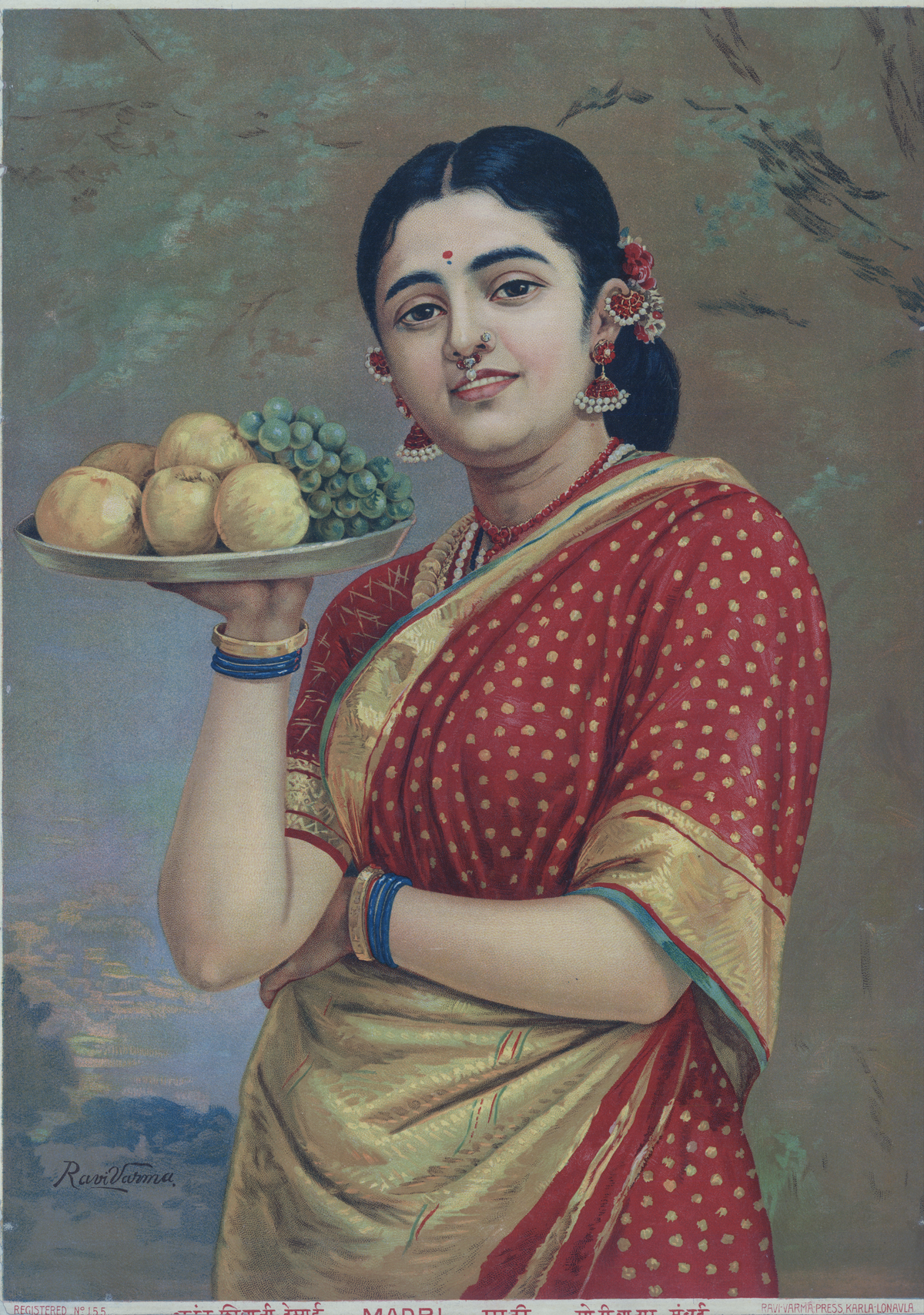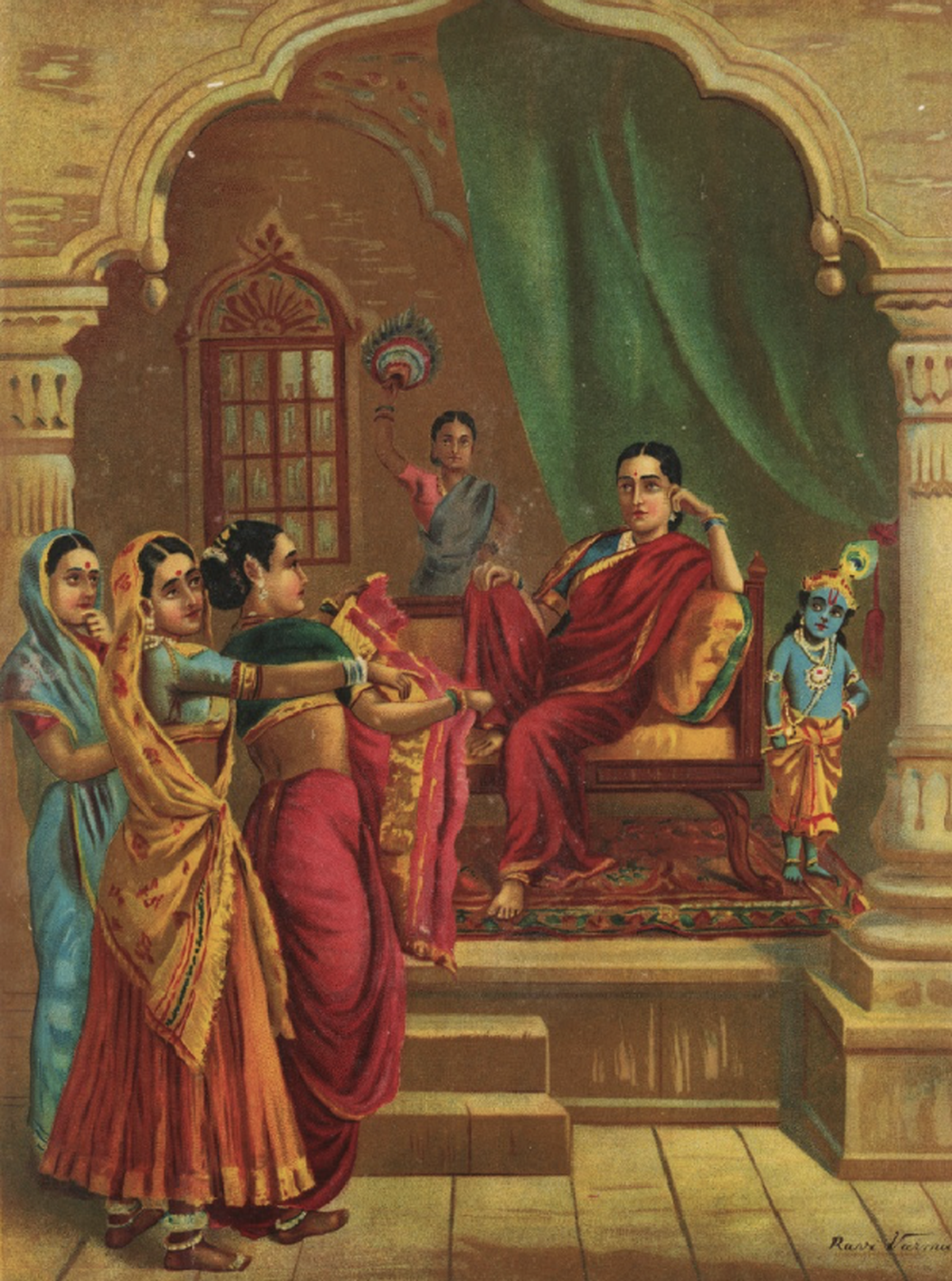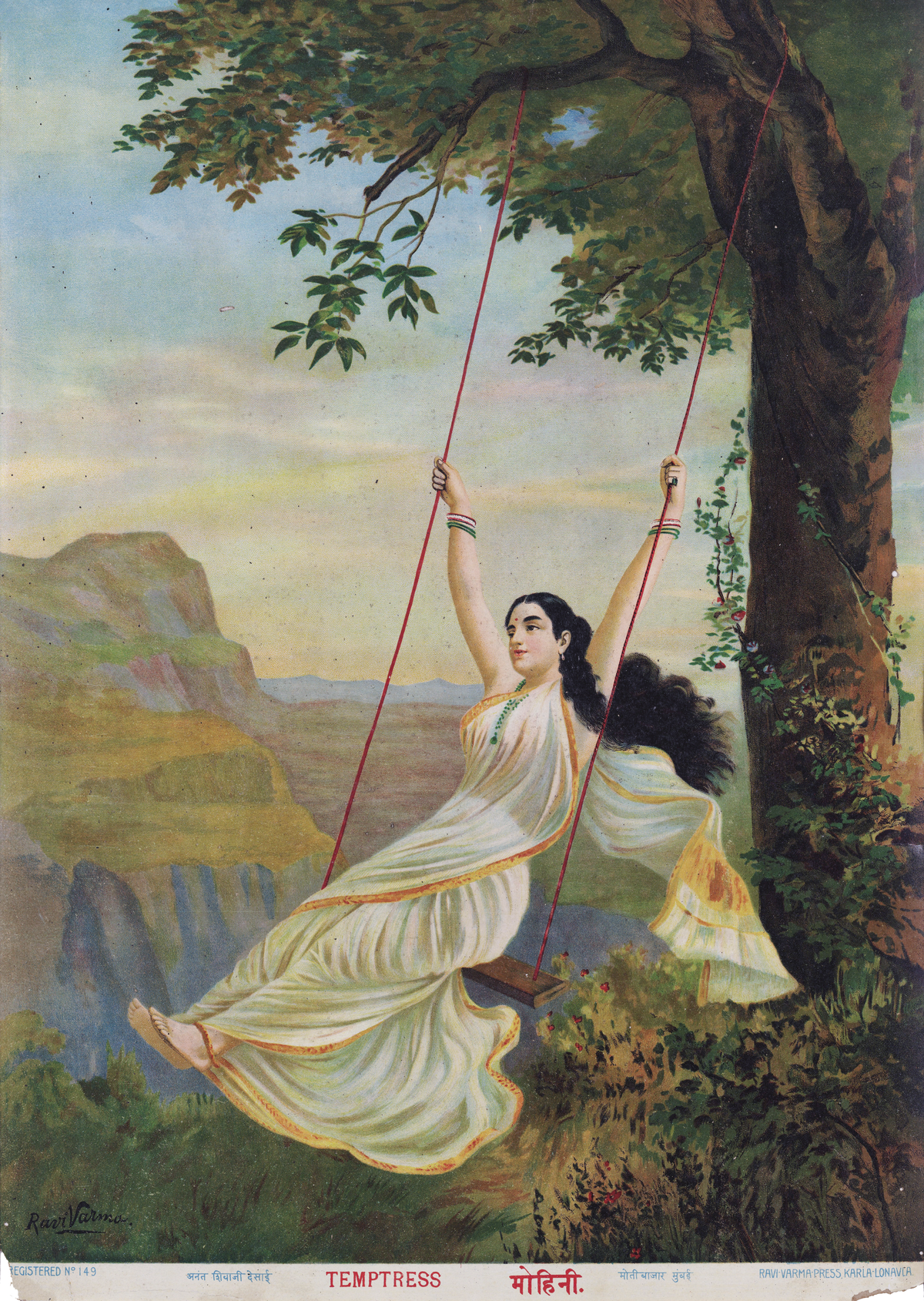Ganesh V Shivaswamy’s work on Raja Ravi Varma was put together with love, serendipity and a scanner in his hand luggage. A lawyer and accidental art collector, Ganesh has been working on a six-volume series titled An Everlasting Imprint, on the legacy of Ravi Varma: a project that began when he was 16 years old.
At the Apparao Gallery, he curated a recent exhibition, titled Raja Ravi Varma — A cultural revolution. At the show, which featured 126 chromolithographs (out of which 122 were from his own collection) from the legendary Ravi Varma Press, Ganesh did an illuminating deep dive into the popular artist’s work over the weekend. The two days included talks on everything from the artist’s legacy to copyright laws.

Madri, by Ravi Varma
| Photo Credit:
Special Arrangement
At the event, he walks visitors though the exhibit, divided by the artist’s main themes: divinities and sages, the Ramayana, the Mahabharata, leaders, damsels and more. Speaking of his many years of collecting the prints, and research, Ganesh says, “I did not want my books associated with a borrowed narrative — so I asked, ‘Is there something new?’” He adds with a chuckle, “I began to travel with a really high-end scanner, which I had to carry as hand baggage as it was delicate.”
His research took him to Manipal’s Hasta Shilpa Village, which has a well- preserved Raja Ravi Varma Archival Museum, and — of course — the artist’s home, Kilimanoor Palace in Kerala.“I would sit on the floor at the palace, with the books on a mat and scan every page. On one of the trips, I asked them ‘Where is the box?,’ and I still don’t know what prompted me to ask,” says Ganesh.

Gopinchin, by Ravi Varma
| Photo Credit:
Special Arrangement
He was led to a cavernous room with a huge box in the centre. “We opened it and discovered photographs of many women who posed for Raja Ravi Varma’s paintings!” This find enabled him to start tracking the families of the models and learn who at least some of them were. “They had notations at the back saying, for example, “Gauri, taken in Benares. Or Raji, in Bombay,” says Ganesh.

Mohini, by Ravi Varma
| Photo Credit:
Special Arrangement
His journey with the artist’s work similarly began by chance. “I’m a cancer survivor,” he states, settling for a chat after a lively discussion on his work at the gallery. Explaining that he was unwell for much of his childhood, he says, “The cancer affected my optic nerve, so my surgeon suggested I start looking at art as therapy.” At 17, he began looking around galleries, stumbled upon a Ravi Varma chromolithograph, and started his collection.
“What started as a prescription became an attraction,” says Ganesh, adding that he has always been fascinated by how the artist’s work reached the public via the printing press. “It made art accessible to the common man.”
The Ravi Varma Fine Art Lithographic Press began in Bombay in 1894 under C Raja Raja Varma, the artist’s brother. He employed an efficient German printer, Fritz Schleicher, who understood the technical aspects of the business. The press moved to Ghatkopar, Bombay, due to a plague and civil unrest, and then finally to Malavali near Lonavla, in 1899. By 1901, it was steeped in debt and sold to Fritz, under whom it was very successful. However by the 1980s, interest in the prints waned, and the press closed down.
As Ganesh’s interest in the artist grew, he began to travel looking for these lost prints. “People did not really value them, even in the 1990s. It is only now that there is a revival of interest in Ravi Varma,” he says, explaining that he bought many off antique dealers and contractors, even rescuing some from being thrown away.
“In Chennai and in Karaikudi, I found Ravi Varma prints being discarded. Demolition contractors were more interested in the teak when a house was broken down, the posters and paintings would often be left in a heap under a tree…” he says, explaining how his collection was built more with patience and perseverance rather than spending a lot of money.
It seems the most apt way to build a tribute to the artist’s work. “After all,” smiles Ganesh, “Ravi Varma was the painter who made art democratic.”
The show is on till November 18 from 3pm to 6.30pm, Tuesday to Saturday. Apparao Gallery is at 7, Wallace Gardens, 3rd Street, Nungambakkam. Call 9841022477 for details.
Stay connected with us on social media platform for instant update click here to join our Twitter, & Facebook
We are now on Telegram. Click here to join our channel (@TechiUpdate) and stay updated with the latest Technology headlines.
For all the latest Art-Culture News Click Here
